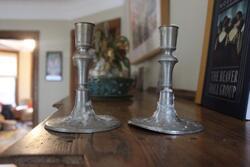Looking at the Kotel Through a Feminist Lens
I remember being four years old and writing notes to God to put into the fake Kotel we had constructed at my preschool. It was about three feet tall and made out of colorful building blocks, but to me, that was as good as it got.
Thirteen years later I finally got to see the real thing. Last summer I was lucky enough to get the opportunity to travel to Israel for the first time. I went on Ramah Seminar, a six-week trip for teens all over North America who have attended Camp Ramah.
I didn’t know what to expect at the Kotel. I figured it wouldn’t be too crowded and that the area surrounding it would be pretty boring and mundane. I always pictured going to the wall and being surrounded by other Conservative Jews, all saying the same prayers using the same tunes. Needless to say, my preschool mock Kotel couldn’t have adequately prepared me for this experience.
As I walked toward the wall I had been dreaming about for so long, I felt the smooth cobblestone beneath my feet, polished by the millions of people who had walked along the same path. Abruptly, I was yanked from my thoughts when my friend grabbed my arm and yelled at me:
“You almost walked straight into the wrong part!”
I had accidentally begun to walk toward the men’s side of the mechitza. As my friend guided me to the women’s side, my excitement quickly turned to anger.
As we got closer and closer to the wall, the space around us got smaller and smaller. The women’s side of the wall is much smaller than the men’s side; and, as men chant and sing and dance freely, women struggle to not step on one another’s skirts.
I struggled to even reach the wall, to press my forehead against the cool Jerusalem stone and pray, to push my note into the cracks. Even as I was praying in one of the holiest places for the Jewish people, I couldn’t fully focus. As I was chanting the Amidah, somewhere in the back of my mind I was thinking that I should probably hurry up because another woman probably wanted my spot.
I didn’t expect my first time at the Kotel to be so infuriating. The stacks of colorful blocks from my preschool days did nothing to prepare me for the experience of feeling subordinate to the men at the wall. To feel like a second-class citizen at the Kotel, somewhere I had looked forward to visiting for most of my life, can only be described as blood-boiling.
Judaism and feminism are two important pieces of my identity that often just don’t fit together. Oftentimes it’s like trying to shove two puzzle pieces together that look like they should fit, but don’t. I had always thought of Judaism and feminism as two separate entities—both important, but never intersecting. Standing at the Kotel, I realized it didn’t have to be that way.
The anger I felt about my experience at the Kotel forced me to take a step back and look at Judaism through a feminist lens, something I hadn’t done before. I thought about how I could recall many biblical stories about our patriarchs being heroes, but only one or two in which a woman takes center stage in a positive way. I thought about how I’ve never heard a d’var torah from a female rabbi even though I belong to a Conservative egalitarian synagogue.
Squished between other women, struggling to focus on my favorite prayer, I realized that I need my Judaism and feminism to go hand in hand. When I’m chanting the Amidah and no one else is adding the names of the matriarchs, I need my feminism to remind me to chant their names proudly. When I’m having a debate about the wage gap or maternity leave, I need my Judaism to remind me to stay calm and be kind.
I may not be able to change how things work at the Kotel, but I can view my experience through a feminist lens, and I can use my voice to advocate for more equal treatment of women in other Jewish spaces. The Jewish part of me will always think that the Kotel is important and holy and moving, and the feminist part of me will always have a problem with the gender division and with the fact that women are given so much less space. That’s ok though.
Pushing my note to God in between colorful blocks at four years old, I was a completely different person than I was when I performed the same action at the actual Kotel thirteen years later.
Looking at Judaism from a feminist perspective has opened my eyes to a multitude of issues but it hasn’t made me any less proud to be Jewish; it’s just made it even more important to be a feminist.
This piece was written as part of JWA’s Rising Voices Fellowship.








Beautiful! Very compelling